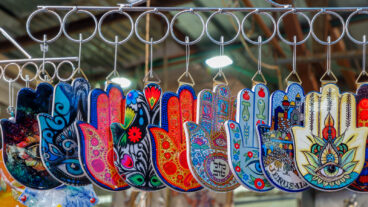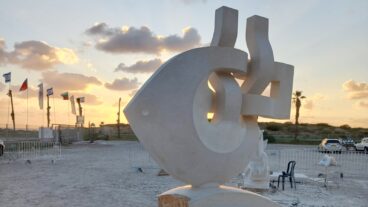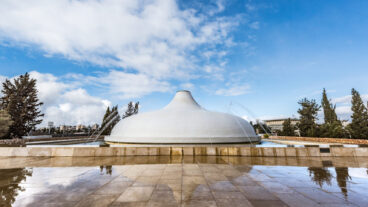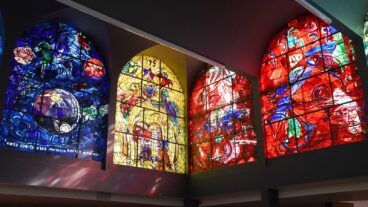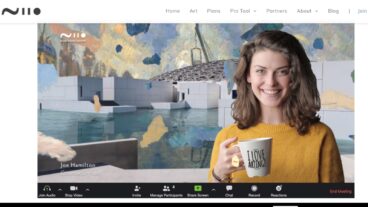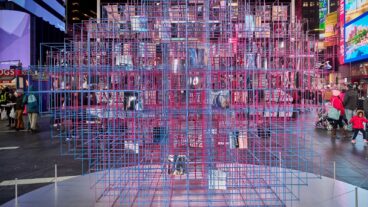It’s hard to know exactly how to describe “The Clock,” Christian Marclay’s award winning art installation, which is currently on display, if that’s even the right word, at the Israel Museum in Jerusalem. Tour de Force? Spellbinding? Unbelievable? They all come to mind.
The piece, at its most simplistic, consists of thousands of short film clips, all containing images of clocks and watches, or references to time, edited together briskly into a movie. There’s room for about 100 people on comfy 3-person white couches spread about in a dark space in which to watch Marclay’s creation.
But that’s just the start. Each film clip refers to a specific time (it might say 2:42 PM on someone’s digital watch, for example); that time corresponds to the actual time in Jerusalem. And the film runs for 24 hours. Although the museum is only open for some of those hours, there are special days where the exhibition space stays all night for those who can’t tear themselves away.
Which is how my wife and I felt during the 2.5 hours we stared transfixed at the screen. How did he do it? How did he find all of those clips, each with a clock, each showing a specific time? Did Marclay watch thousands of movies? Did he have a staff?
The mix of film clips was equally impressive, zipping seamlessly from 1930s black and white to modern drama and comedy. Robert Redford was a recurring image during our brief encounter. There were scenes of London’s Big Ben repeatedly chiming on the hour, a gagged and bound man watching the timer on a bomb countdown, clips which started out with nothing connected with time when, suddenly, the camera would pan up to show a clock on the wall displaying the appropriate hour.
Marclay uses actual and inserted music to tie the images together; to build tension and release. There are explosions and love scenes, in English, Japanese, French, German and many more language we didn’t hear but were probably coming up once the museum was closed.
The result is not only a meditation on the specific times shown via the clocks on screen, but also about how time has changed the craft of movie making.
There was also the audience, which ebbed and flowed as time passed. Sometimes it was standing room only; at other points we were nearly alone. About half way through, a large group of boisterous Israeli teens filtered in, sitting on the floor, yelling, laughing at scenes that were meant to be serious. My wife and I almost decided to leave – the group had ruined our more pristine viewing of Marclay’s art. But then the group moved on. Time passed so slowly – it seemed like forever while we were suffering these teens’ disrespect. In reality, they were there for less than 10 minutes.
“The Clock” premiered in London in October, 2010, and has since been presented in New York, Los Angeles, Venice, and Moscow. Marclay won the Golden Lion award at the 2011 Venice Biennale, where “The Clock” was featured as the show’s central exhibition.
“The Clock” is one in a string of world-class productions that have graced Israel this year. Another that stands out was the performance of Steve Reich’s Trains earlier this year at the Tower of David museum – I wrote about it here.
The show closes on October 22. The next (and last) all-nighter is tonight, Tuesday, October 18; admission is free after 9:00 PM. Run to see – before time is out.







